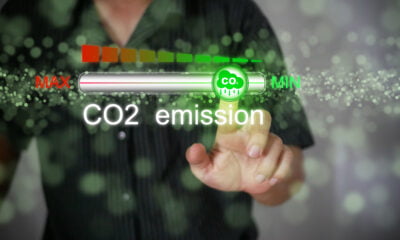For many businesses, one of the areas in which they particularly have a heavy carbon footprint is their supply chain or, for companies specifically focused on moving goods from place to place, their own logistics.
While it’s obviously not easy or even likely that you’ll be able to radically reduce or eliminate your footprint, there are many steps you can take to at least cut it back, whether you have your own fleet of vehicles or use the services of companies that do. Read on for some tips for a greener supply chain your organization can start implementing.
Use Item Consolidation Programs
A strategy growing in popularity is that of using item consolidation programs. Rather than having trucks ship only partially full loads each day, it’s now possible, using consolidation programs (which are particularly suited to retail operations) to combine purchase orders and take full truckloads of goods to a single distribution center.
When it comes to retail, an example of how this system works is that suppliers work closely with retailers, keeping enough stock on hand to provide just-in-term service while also considering future needs. Retailers can create single orders that include multiple suppliers. Inside warehouses, logistics managers then calculate the best formation or “matrix” of orders to maximize truck space. This is based on the capacity, weight and stackability of each order.
Carrier consolidation practices can be used to fill up space at the last moment, so the wasteful practice of “shipping air,” as it’s known, is minimized. Using algorithmic technology, orders can be designed to fill empty pallet spots whenever a truck is in the nearby area and can pick up packages.
Use Telematics to Track Driver Behavior
Since one of the biggest issues in supply chains when it comes to the environment is the use of fuel, businesses are encouraged to obtain better fuel efficiency by monitoring driver behavior and teaching drivers to reduce carbon emissions on their trips.
This can be done by teaching how to drive with gentle acceleration, a flat speed and less idling. Rather than stopping and starting suddenly, speeding quickly and the like, drivers who are conscious of how fuel is consumed can drive more smoothly and save a considerable amount of gas over a year.
To monitor this behavior, fleet managers can utilize telematics. This technology is used to monitor a variety of information relating to an individual vehicle or an entire fleet. Telematics systems gather a range of information about vehicle activity, including driver behavior.
Plan Routes More Efficiently
Another way to minimize fuel usage and cut back on carbon emissions is to plan the travel routes of freight providers more efficiently. There is plenty of software that can work out the shortest and fastest ways to get from Point A to Point B, thereby reducing not just the miles traveled but also the gas consumed while stopped at lights, traffic or other holdups. Plus, of course, drivers won’t get lost when they have technology telling them where to go, so they won’t burn fuel unnecessarily. In addition, advanced GPS systems and traffic applications as well as other programs can now also advise drivers of alternative routes to take when their pre-planned routes are no longer the best choice, due to delays from traffic accidents, roadworks etc.
Use Alternative Fuels
Apart from using less fuel, companies can reduce their impact on the environment by using more eco-friendly fuel options. There are numerous fuels to choose from, but biodiesel tends to be one of the most readily available, and it doesn’t typically require any engine modifications. Since it has become more and more popular, many gas stations around the country now carry biodiesel.
The National Biodiesel Board is a good resource to check out. They provide maps of fueling stations and an introduction to software that helps to locate relevant providers of alternative fuels along routes traveled.
Optimize Warehouse Locations, Layouts and Processes
Freight firms and other logistics companies should also think about ways to optimize their warehouse locations, layouts and processes to get a green advantage. For example, it pays to have strategically placed warehouses in centralized locations around the country. This way, routes will be maximized for shipping potential.
The design of warehouses is important, too. Using performance analytics and metrics, you can work out how to maximize space in buildings, so the smallest possible footprint can be used. Logistics managers can use tech tools to come up with more efficient processes that reduce the need for so many resources on site and throughout the different shipping stages.




















